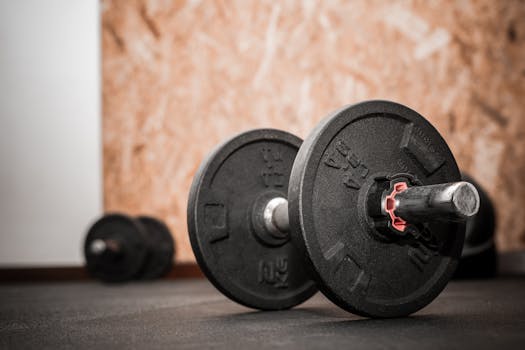
High-Intensity Interval Training (HIIT) for Fat Loss: A Comprehensive Guide
What is High-Intensity Interval Training (HIIT)?
High-Intensity Interval Training (HIIT) is a type of workout that involves short periods of high-intensity exercise followed by brief periods of rest. This type of training has been shown to be effective for fat loss, improving cardiovascular health, and increasing muscle strength and endurance. HIIT workouts are typically shorter than traditional workouts, lasting anywhere from 15-30 minutes, but they are much more intense.
How Does HIIT Work for Fat Loss?
HIIT works for fat loss by increasing the body’s energy expenditure and enhancing the metabolism. During a HIIT workout, you are pushing your body to its limits, which causes your heart rate to increase and your muscles to work harder. This leads to an increase in caloric burn, both during and after the workout. Additionally, HIIT has been shown to improve insulin sensitivity, which can help regulate blood sugar levels and promote fat loss.
Benefits of HIIT for Fat Loss
- Time-efficient: HIIT workouts are shorter than traditional workouts, making them perfect for busy individuals.
- Caloric burn: HIIT workouts have been shown to burn more calories than traditional workouts, both during and after the exercise.
- Improved insulin sensitivity: HIIT has been shown to improve insulin sensitivity, which can help regulate blood sugar levels and promote fat loss.
- Increased muscle strength and endurance: HIIT workouts often involve strength training exercises, which can help improve muscle strength and endurance.
- Improved cardiovascular health: HIIT workouts have been shown to improve cardiovascular health by increasing heart rate and blood flow.
Examples of HIIT Workouts for Fat Loss
Here are some examples of HIIT workouts that you can try:
- Sprints: Sprinting is a great way to incorporate HIIT into your workout routine. Simply warm up with some light cardio, then sprint at maximum effort for 20-30 seconds. Walk or jog for 1-2 minutes to recover, then repeat for 15-20 minutes.
- Burpees: Burpees are a full-body exercise that involve a squat, push-up, and jump. They are a great way to incorporate strength training and cardio into your HIIT workout. Simply do 10-15 burpees in a row, rest for 30-60 seconds, then repeat for 15-20 minutes.
- Jump squats: Jump squats are a great way to work your legs and glutes. Simply stand with your feet shoulder-width apart, then lower your body into a squat position. From there, jump up into the air, landing softly on the balls of your feet. Repeat for 15-20 minutes, resting for 30-60 seconds between sets.
- Mountain climbers: Mountain climbers are a great way to work your core and legs. Simply start in a plank position, then bring one knee up towards your chest. Quickly switch to the other knee, mimicking the motion of running. Repeat for 15-20 minutes, resting for 30-60 seconds between sets.
Tips for Incorporating HIIT into Your Workout Routine
Here are some tips for incorporating HIIT into your workout routine:
- Start slow: If you’re new to HIIT, start with shorter workouts and gradually increase the duration and intensity as you get more comfortable.
- Warm up and cool down: Always warm up before your HIIT workout with some light cardio and stretching, and cool down afterwards with some static stretches.
- Listen to your body: If you’re feeling tired or experiencing pain, stop and rest. It’s better to err on the side of caution when it comes to HIIT workouts.
- Vary your workouts: To avoid boredom and prevent plateaus, vary your HIIT workouts by changing the exercises, duration, and intensity.
Conclusion
High-Intensity Interval Training (HIIT) is a great way to lose fat and improve overall health. By incorporating HIIT into your workout routine, you can increase your caloric burn, improve insulin sensitivity, and enhance your cardiovascular health. Remember to start slow, warm up and cool down, listen to your body, and vary your workouts to get the most out of your HIIT routine.




